What is a Falcon?
What is a falcon, really? There was a time we thought we knew. Based on their physical attributes and lifestyle, falcons enjoyed a very long run as a founding member of the order Falconiformes, along with the rest of the diurnal raptor-y type birds like vultures and eagles and hawks and hawk-eagles. But the secrets that lie within their genes eventually became public, and it turns out that these arguably most impressive of the raptors (though even that term is less and less useful) are not, in any way, related to the rest of the apex predatory birds, and in fact lie much closer to the perching birds and not far at all from the parrots. Birders in the 21st Century are no stranger to genetic re-evaluations of species relationships, but this one may well be considered the blot heard round the world.
Here’s the funny thing though. Once separated from the hawks and eagles, we begin to see falcons as they really are. Yeah, the diurnal hunting thing was a huge reason they were put together in the first place, but falcons have a range of adaptations to their unique and remarkable lifestyle that are not shared by any of the other diurnal raptors. For starters, they have the little notch in their bill that delivers the killing blow to spinal cords. They have small bony protuberances in their nostrils that baffles air flow and allows them to breathe while flying at high speeds. And there are those remarkable pointed wings, and their reputation for intelligence not shared with the rest of their former family. These are special birds.
Gyrfalcon, photo by Clare Kines
They’re found on six of the seven continents – in fact one species, the cosmopolitan Peregrine Falcon, holds that distinction all on its own. The range in size from southeast Asia’s tiny Black-thighed Falconet, a mere 6 inches of falcon fury, to the massive holarctic Gyrfalcon, the females of which can be nearly a meter long. The group can be roughly broken down into four groups, the smallest of which are those aforementioned falconets, 5 tiny Asian species in the genus Micohierax which are voracious predators of flying insects. The classic falcon genus, Falco, consists of 37 species of winged death, and contains most of the species we think of when we talk about the family including those dainty kestrels (which have been given the I and the Bird treatment before).
Merlin, photo by Daryl Cavallaro
Kestrels are undoubtedly classic falcons, but their means of foraging by hovering over grassy fields differentiates them. The distinction is more than just behavioral, as the 14 species deemed to be kestrel are more closely related to each-other than to the rest of the genus. Falcons called kestrels do tend to be smaller and more slender, and often nest in cavities rather than the cliff faces preferred by their co-geners. With the exception of our American Kestrel, the group is limited to the Old World (as is the bulk of falcon diversity generally, to be fair), and even within the kestrels there are distinct clades. Most are among the malar-striped “classic” kestrels, and there is none more classic than the widespread Common Kestrel, but the African species are distinct.
American Kestrel, photo by Alex Lamoreaux
Larger members of the genus Falco more closely resemble the public’s perception of falcons. These species are merciless predators of birds, often captured on the wing in fantastic stoops from a great height. The widespread Peregrine Falcon is undoubtedly the prototype, and is widely acknowledged as the “fastest animal on earth” with stoops on prey recorded in excess of 200 miles per hour. And the fact that this one species can be found from southeast Asia to western Oregon to Atlantic City to the Australian bush, even finding our city high-rises an acceptable nesting substitute to the rocky cliffs of their historic past. But to focus on the Peregrine gives the short shrift to incredible species like the Prairie Falcon of western north America, the highly-migratory Amur Falcon whose travels span both Asia and Africa, the pugilistic little Merlin, familiar to every birder in the northern hemisphere, Australia’s natty Brown Falcon, and Mesoamerica’s unique Bat Falcon whose preferred prey is precisely what you might think.
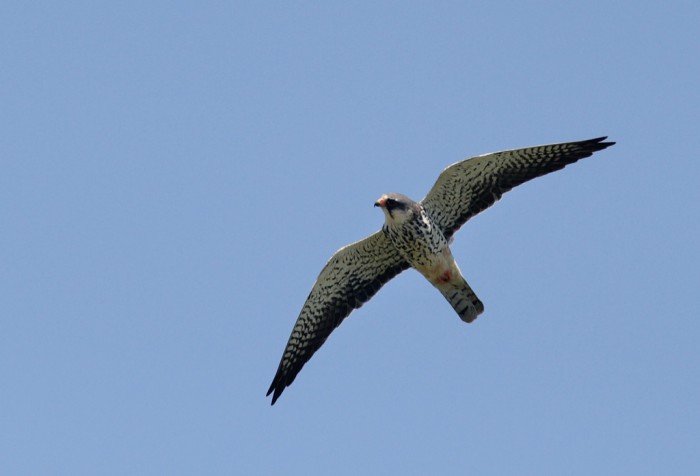
Amur Falcon, photo by Alex Lamoreaux
The new and improved Falconiformes also contains such unusual species as Laughing Falcon, unusual among falcons as a snake specialist, and the neotropic forest-falcons, which really look and act more like Accipiterine hawks than the open-country speed merchants that have impressed themselves on our own culture for centuries.
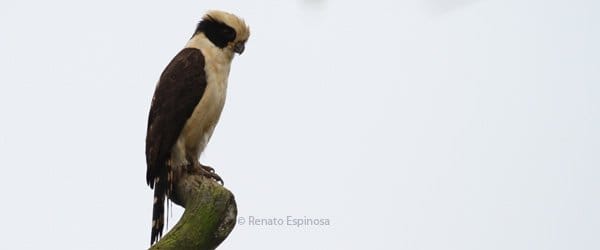
Laughing Falcon, photo by Renato Espinosa
Yes, few families of birds (except, perhaps, for their sister taxa, the parrots) have endeared themselves to us such that we’ve kept them in our own homes. The practice of hunting with birds has persisted since the 8th Century, when ancient Assyrians are illustrated on bas reliefs with falcons on their hands. In modern times, the practice has come under scrutiny, though it’s still practiced more or less identically to how it was hundreds of years ago.
And regardless of how you feel about the continued use of falcons for sport, it’s impossible to deny their power and grace, and to fail to be sympathetic to those who want to be close to them, be that in jesses on your arm through binoculars as it screams across a mudflat in pursuit of shorebirds. Wherever they are, they’re magnetic.
Merlin, photo by Walter Kitundu
–=====–
Peregrine Falcon, Falco peregrinus
- Peregrine Falcon feasting on a White-vented Mynah – David Tan, Bird Ecology Study Group
- Peregrine Falcon on Cape Lookout Beach Oregon – Robert Mortenson, Birding is Fun
- Peregrine Falcon: The Fastest Animal on the Planet – Larry Jordan, The Birders Report
- A Visit from a Peregrine Falcon – Larry Jordan, The Birders Report
- Back to Nature – Duncan Fraser, Ben Cruachan Blog
- Peregrine Power – Gail Morris, God Girl Gail
- The Ottawa Falcon Watch Resumes – Gillian Mastromatteo, The Pathless Wood
- The notch in a Peregrine Falcon’s beak – Kelly Riccetti, Red and the Peanut
- Close Encounter of the Peregrine Kind – Alex Lamoreaux, The Nemesis Bird
- Peregrine Falcon – Too much of a Comeback? – Corey Finger, 10,000 Birds
- Peregrine Paradise – Corey Finger, 10,000 Birds
- Birding after the Snow – Sharon Stiteler, 10,000 Birds
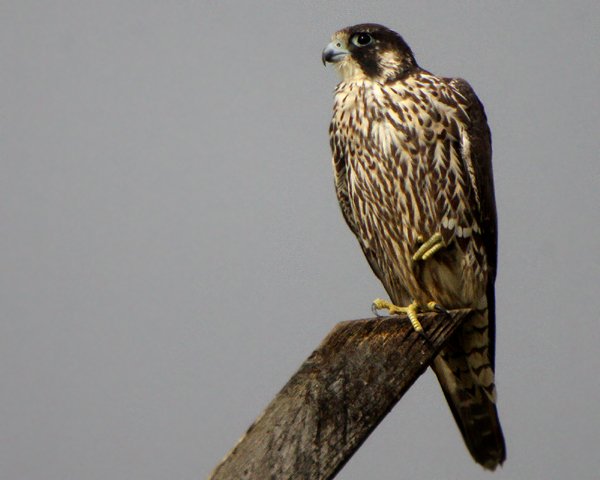 Peregrine Falcon, photo by Corey Finger
Peregrine Falcon, photo by Corey Finger
Prairie Falcon, Falco mexicanus
- The Prairie Falcon – Larry Jordan, the Birders Report
- Prairie Falcon Encounter – Charlotte Wasylik, Prairie Birder
- Notes on the Charismatic Falcons Visiting an Alberta Grain Terminal – Michael Butler, Knob & Kettle
- Adult Prairie Falcon with a full crop – Mia McPherson, On the Wing Photography
Brown Falcon, Falco berigora
- Falco berigora – Duncan Frasor, Ben Cruachan Blog
- Brown Birds near Broome – Claire M, 10,000 Birds
Amur Falcon, Falco amurensis
- Amur Falcon – Alex Lamoreaux, The Nemesis Bird
Merlin, Falco columbarinus
- Merlin vs. Bat – Drew Weber, The Nemesis Bird
- The Perils of Feeders – Sharon Stitler, 10,000 Birds
- The Joy of Letting Go – Walter Kitundu, 10,000 Birds
Gyrfalcon, Falco rusticolis
- Whitewash the Truth – Clare Kines
Red-footed Falcon, Falco vespertinus
- More Birding Kazakhstan – Corey Finger, 10,000 Birds
Bat Falcon, Falco rufigularis
- A Rare Momement on Lake Peten Itza – Mike Bergin, 10,000 Birds
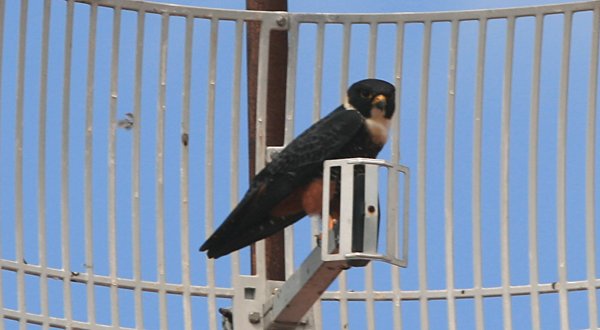 Bat Falcon, photo by Mike Bergin
Bat Falcon, photo by Mike Bergin
Aplomado Falcon, Falco femoralis
- South Texas: Of Stetsons, Steeds, and Stakeouts – James Currie, 10,000 Birds
American Kestrel, Falco sparverius
- Banding American Kestrels at SGL#205 – Anna Fasoli, The Nemesis Bird
- Southeastern American Kestrel egg color variation – Ann Fasoli, The Nemesis Bird
- Ageing American Kestrel Chicks – Anna Fasoli, The Nemesis Bird
- Eyes in the Back of its Head – Nate Swick, The Drinking Bird
- Goodbye 2012, Hello 2013 – Mia McPherson, On the Wing Photography
Common Kestrel, Falco tinnunculus
- Sunday Spain Bird of the Week #1: Common Kestrel – James Meehan, The Birding Bros Blog
Lesser Kestrel, Falco naumanni
- Sunday Spain Bird of the Week #15: Lesser Kestrel – James Meehan, The Birding Bros Blog
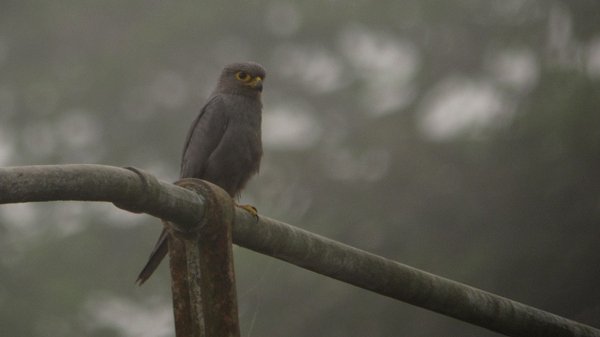 Gray Kestrel, photo by Chris Townend
Gray Kestrel, photo by Chris Townend
Gray Kestrel, Falco ardosiaceus
- Ghana-Upper Guinea Forest Birding at its Best – Chris Townend, 10,000 Birds
Laughing Falcon, Herpetotheres cachinnans
- Raptors at Botrosa Road – Renato Espinosa, 10,000 Birds
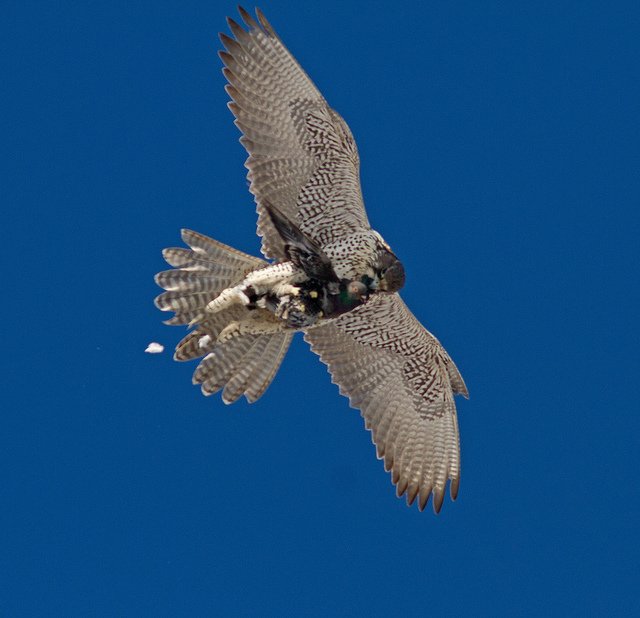 Gyrfalcon, photo by Don Delaney
Gyrfalcon, photo by Don Delaney
General Falconry
- Falcons – Greg Laden, Greg Laden’s Blog
- Falcons of North America – Grant McCreary, The Birder’s Library
- Cool Falcons in Costa Rica – Pat O’Donnell, Costa Rica Living and Birding
- What is a Raptor? What you “know” is probably wrong – David Ringer, 10,000 Birds
- Will Parrots and Falcons soon be moved around in your Field Guide? – David Ringer, 10,000 Birds
- What is a Kestrel? – Mike Bergin, 10,000 Birds
- Is Falconry a Good Thing? Dale Forbes, 10,000 Birds
- Falconry: Bloodsport or Alternative Form of Birding? – James Currie, 10,000 Birds
- Superheros and the Birds – Duncan Wright, 10,000 Birds
- Disclosing Falcon Locations: Put up or shut up? – Radd Icenoggle, Raddley Ice


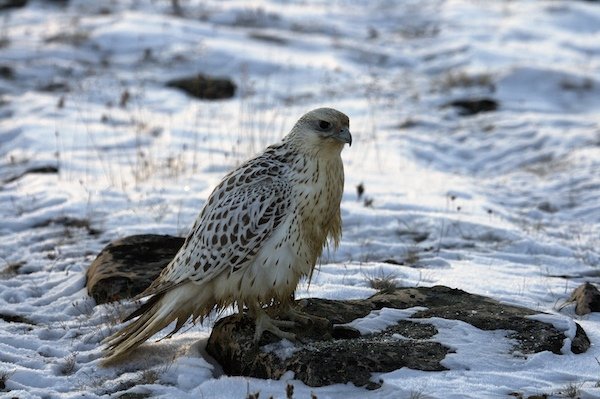
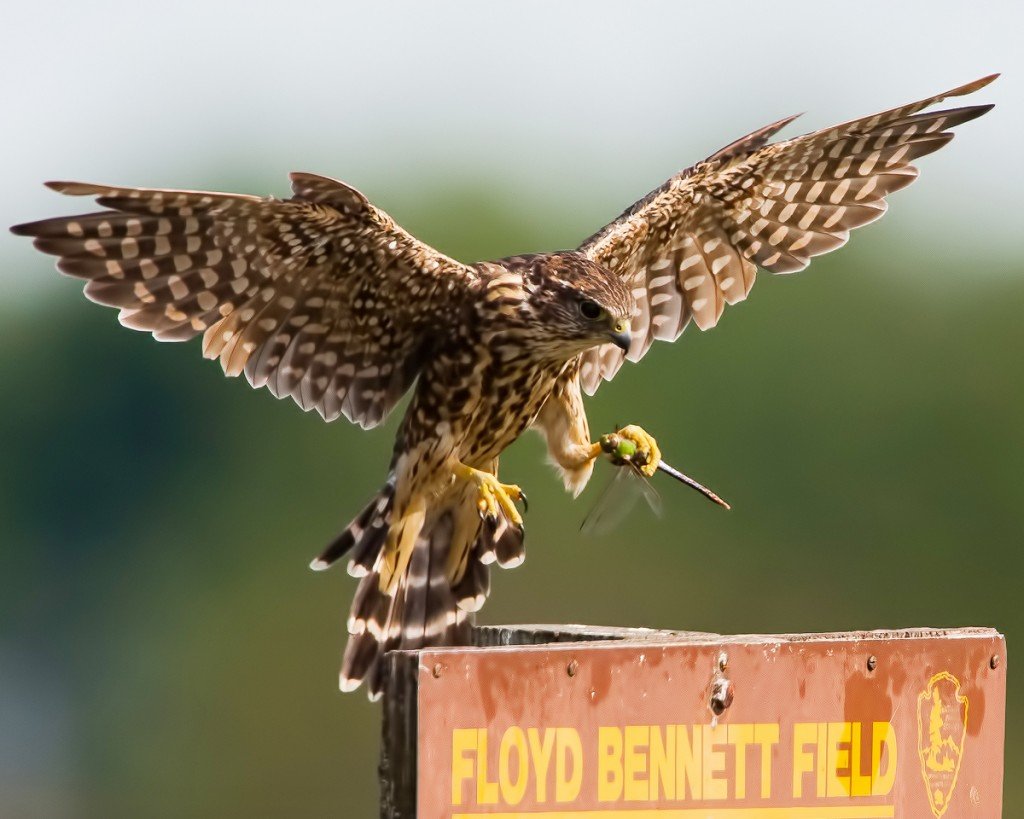
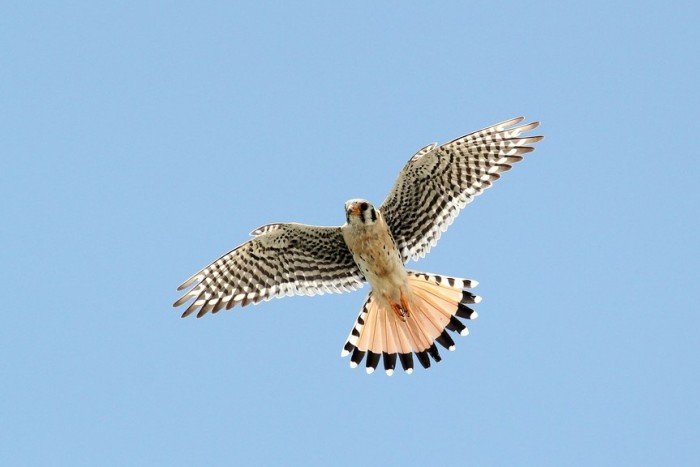
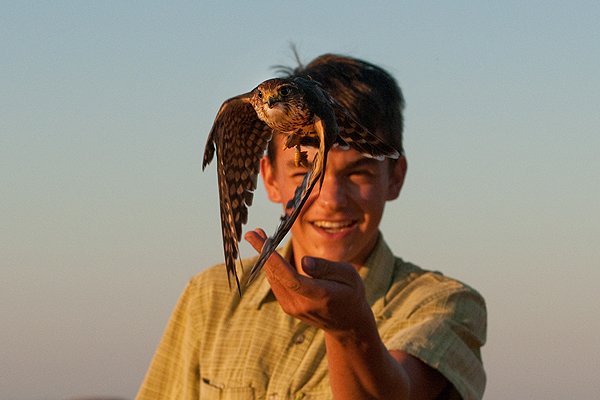




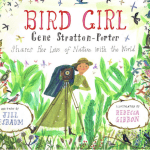
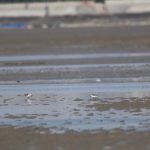
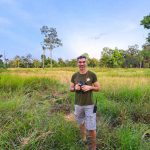
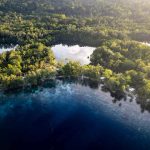
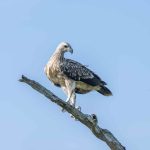
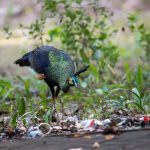
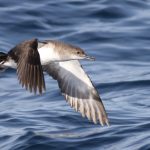
Leave a Comment